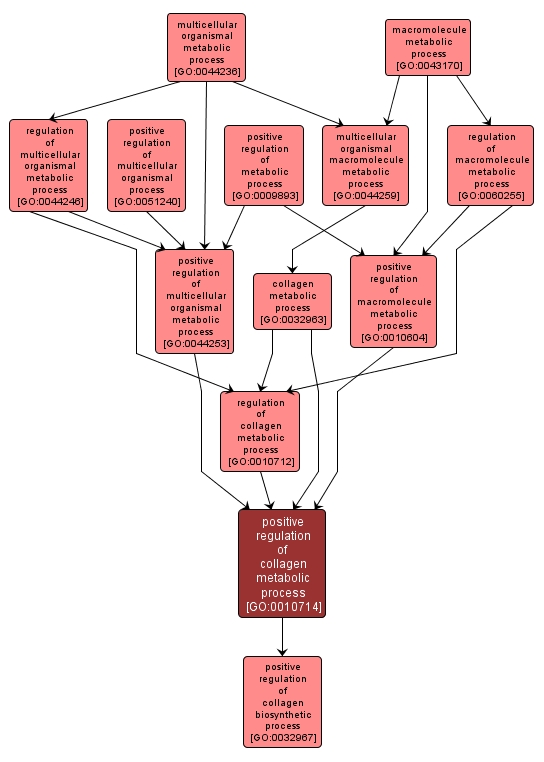GO TERM SUMMARY
|
| Name: |
positive regulation of collagen metabolic process |
| Acc: |
GO:0010714 |
| Aspect: |
Biological Process |
| Desc: |
Any process that increases the frequency, rate or extent of the chemical reactions and pathways resulting in the metabolism of collagen, any of a group of fibrous proteins of very high tensile strength that form the main component of connective tissue in animals. |
Synonyms:
- positive regulation of collagen metabolism
|
|

|
INTERACTIVE GO GRAPH
|














